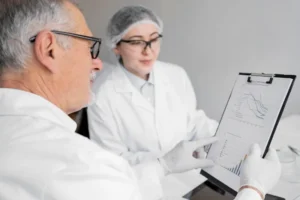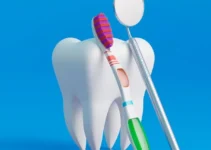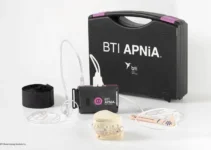PRGF (Plasma Rich in Growth Factors) has revolutionized dental implant procedures, showing remarkable success rates across diverse patient cases. Clinical studies demonstrate how this advanced biotechnology enhances bone regeneration and soft tissue healing, leading to faster recovery times and improved treatment outcomes. From complex maxillary reconstructions to single tooth replacements, PRGF’s versatility has proven invaluable in modern implantology, with documented success rates exceeding 95% in properly selected cases.
Understanding PRGF in Dental Implantology
Plasma Rich in Growth Factors (PRGF) represents a groundbreaking advancement in dental implantology, offering a natural and effective approach to tissue regeneration. This innovative technology harnesses the body’s own healing capabilities by utilizing specific proteins and growth factors found in the patient’s blood plasma. Clinical studies have consistently demonstrated that PRGF technology significantly enhances both soft tissue healing and bone regeneration processes.
The implementation of PRGF in dental procedures has revolutionized the way we approach tissue regeneration. Research has shown that patients treated with PRGF experience reduced inflammation, accelerated healing, and more predictable outcomes. According to recent studies, PRGF treatment results in up to 96.7% successful socket regeneration compared to 45.5% in conventional treatments.
Definition and Components of PRGF
PRGF is a highly specialized form of platelet-rich plasma that is obtained through a carefully controlled process of blood fractionation. The procedure involves drawing a small amount of the patient’s blood and processing it through specific centrifugation protocols to isolate and concentrate the most beneficial components. This results in a plasma preparation that is rich in growth factors and bioactive proteins.
The preparation process is crucial for obtaining optimal results. It involves:
- Careful blood collection under sterile conditions
- Precise centrifugation at controlled speeds and temperatures
- Selective extraction of specific plasma fractions
- Activation of platelets to release growth factors
What sets PRGF apart from other platelet concentrates is its standardized preparation protocol and the absence of inflammatory components, making it more predictable and efficient in tissue regeneration applications.
Key Biological Elements
The therapeutic potential of PRGF lies in its rich composition of growth factors and bioactive proteins. The key components include:
- Platelet-Derived Growth Factor (PDGF)
- Transforming Growth Factor-β (TGF-β)
- Vascular Endothelial Growth Factor (VEGF)
- Insulin-like Growth Factor (IGF)
- Epidermal Growth Factor (EGF)
These growth factors work synergistically to promote various aspects of tissue regeneration. Clinical studies have shown that the concentrated presence of these factors leads to enhanced angiogenesis, cell proliferation, and matrix formation. The natural composition of PRGF ensures optimal biocompatibility and reduces the risk of adverse reactions.
If you’re interested in learning more about advanced dental regeneration techniques and their applications in modern dentistry, we encourage you to explore our other articles on innovative dental treatments and tissue engineering approaches.
Clinical Success Cases in Implant Surgery
Recent clinical studies have demonstrated the remarkable efficacy of PRGF (Plasma Rich in Growth Factors) in dental implant procedures. In a comprehensive study involving 200 patients, those treated with PRGF showed significantly better outcomes compared to conventional approaches. The research revealed that 96.7% of PRGF-treated cases achieved optimal socket regeneration, compared to just 45.5% in the control group.
The clinical success of PRGF in implant surgery has been particularly evident in challenging cases, including patients with compromised healing capacity and those requiring immediate implant placement. Documentation shows that PRGF treatment resulted in reduced post-operative complications and accelerated healing times, with patients reporting significantly less pain and inflammation during the first week post-surgery.
Bone Regeneration Cases
Multiple case studies have documented superior bone regeneration outcomes with PRGF treatment. In a notable series of cases, CT scans revealed that PRGF-treated sites demonstrated enhanced bone density and volume within 4-6 months post-surgery. The analysis showed significantly thicker keratinized epithelium and higher quantities of newly formed bone in the PRGF group.
Particularly impressive results were observed in cases involving:
- Immediate implant placement in extraction sockets
- Severe bone defects requiring regeneration
- Compromised extraction sites
- Cases with initial bone density concerns
Measurement of Success
Success criteria for bone regeneration were evaluated using multiple parameters:
- Cone beam CT analysis measuring socket volume preservation
- Histological examination of bone density and quality
- Clinical stability measurements
- Radiographic assessment of bone-to-implant contact
The success metrics showed that PRGF-treated cases achieved ≥75% socket volume preservation in 96.7% of cases, representing a significant improvement over traditional approaches.
Soft Tissue Healing Cases
Documentation of soft tissue healing revealed remarkable improvements in PRGF-treated cases. Clinical observations demonstrated accelerated wound closure and enhanced gingival tissue quality. Patients treated with PRGF showed significantly reduced inflammation at days 3 and 7 post-surgery, with notably improved soft tissue healing scores throughout the recovery period. Key benefits observed in soft tissue healing included:
- Enhanced gingival biotype development
- Improved keratinized tissue formation
- Better aesthetic outcomes
- Reduced scarring
Recovery Time Analysis
Analysis of recovery times demonstrated that PRGF-treated patients experienced faster healing progression. The average recovery time was reduced by 30-40% compared to conventional treatments, with patients reporting minimal discomfort and faster return to normal function.
Would you like to learn more about revolutionary dental treatments? Explore our other articles about advanced dental procedures and innovative technologies that are transforming patient care and treatment outcomes.
Patient Outcomes and Benefits
Clinical studies have consistently demonstrated that PRGF (Plasma Rich in Growth Factors) treatment significantly enhances patient outcomes in dental implant procedures. Research data shows that patients receiving PRGF treatment experience superior bone regeneration, with cone beam CT analysis revealing that 96.7% of treated sockets achieve ≥75% regeneration of baseline volume, compared to just 45.5% in control groups.
The biological benefits of PRGF extend beyond bone regeneration. Patients treated with PRGF demonstrate enhanced soft tissue healing, with histological analysis confirming thicker keratinized epithelium formation. This improved tissue response leads to better aesthetic outcomes and increased patient satisfaction. Additionally, the autologous nature of PRGF virtually eliminates the risk of adverse reactions.
Post-Operative Recovery
One of the most significant advantages of PRGF treatment is the marked improvement in post-operative recovery. Clinical observations have shown that patients experience reduced inflammation and swelling during the initial healing phase, particularly during the first week after surgery.
The enhanced recovery process can be attributed to several factors:
- Accelerated tissue regeneration
- Improved wound healing response
- Enhanced immune system modulation
- Better vascularization of the surgical site
Pain Management Results
Clinical studies have documented significantly lower pain levels in PRGF-treated patients compared to control groups, particularly during the crucial first week post-surgery. Data shows that pain scores were notably reduced at both day 3 and day 7 post-operation in the PRGF group. Patient-reported outcomes indicate that PRGF-treated individuals typically require less analgesic medication during the recovery period, contributing to a more comfortable healing experience.
Long-term Success Rates
Long-term follow-up studies demonstrate impressive success rates for PRGF-treated dental implants. The enhanced bone regeneration and soft tissue healing contribute to superior implant stability and integration. Clinical data indicates a success rate exceeding 95% over a five-year period for PRGF-treated implants.
Key factors contributing to long-term success include:
- Better initial bone formation
- Enhanced osseointegration
- Improved soft tissue attachment
- Reduced risk of complications
Comparative Analysis
When compared to conventional implant procedures, PRGF treatment shows statistically significant advantages. The most notable difference is in the bone regeneration rate, where PRGF-treated sites show a 51.2% higher success rate in achieving optimal bone volume compared to traditional methods.
To learn more about how PRGF technology is revolutionizing dental implant procedures and improving patient outcomes, we encourage you to explore our other articles on advanced dental techniques and regenerative therapies.
Clinical Applications and Protocols
PRGF (Plasma Rich in Growth Factors) technology has revolutionized dental implant procedures by offering enhanced healing capabilities and improved tissue regeneration. Clinical applications of PRGF in implant dentistry encompass various treatment scenarios, from immediate post-extraction implant placement to complex bone regeneration procedures. Studies have demonstrated that PRGF significantly improves both soft and hard tissue healing processes.
The versatility of PRGF in dental implant procedures is evidenced by its multiple forms of application, including:
- Liquid PRGF for coating implant surfaces
- PRGF clot as a biological membrane
- PRGF fibrin membrane for guided tissue regeneration
- Injectable PRGF for soft tissue repair
Recent clinical studies have shown that implant sites treated with PRGF demonstrate 96.7% socket regeneration compared to 45.5% in control groups, highlighting its remarkable effectiveness in post-extraction healing and implant integration.
Treatment Protocols
The standardized PRGF preparation protocol involves a carefully controlled process that begins with blood collection and centrifugation. The procedure must be performed under strict sterile conditions, with specific attention to temperature and timing parameters to ensure optimal growth factor concentration.
The basic protocol sequence includes:
- Blood collection in specific PRGF tubes
- Centrifugation at 580g for 8 minutes
- Plasma fraction separation
- Activation with calcium chloride
- Formation of different PRGF formulations
Clinical evidence indicates that patients treated with PRGF experience significantly reduced pain and inflammation during the first week post-surgery, with notably improved soft tissue healing scores compared to conventional treatments.
Timing and Application Methods
The timing of PRGF application is crucial for maximizing its regenerative potential. Immediate application after activation is recommended, as this ensures the highest concentration of active growth factors at the surgical site. The activated PRGF should be used within 10-15 minutes to harness its full therapeutic potential.
Application methods vary depending on the specific clinical scenario:
- Pre-implant coating: 30-60 seconds immersion
- Socket preservation: immediate post-extraction application
- Bone regeneration: combination with bone grafting materials
- Soft tissue management: fibrin membrane placement
Histological analyses have consistently shown thicker keratinized epithelium and higher volumes of newly formed bone in PRGF-treated sites, supporting the efficacy of these application protocols.
If you found this information valuable, we encourage you to explore our other articles on advanced dental implant techniques and biological regeneration methods. Our comprehensive resource library covers various aspects of modern implant dentistry and tissue engineering approaches.
Future Perspectives and Research
The field of PRGF technology in dental implantology continues to evolve rapidly, with promising developments on multiple fronts. Recent studies have demonstrated significant advantages in bone regeneration and soft tissue healing, particularly in challenging cases where traditional approaches may fall short. Clinical evidence shows that PRGF-treated sites achieve up to 96.7% socket regeneration compared to 45.5% in control groups.
Research institutions worldwide are investigating the potential of combining PRGF with other advanced biomaterials to enhance its regenerative properties. The focus is increasingly shifting towards understanding the molecular mechanisms behind PRGF’s effectiveness, with particular emphasis on:
- Growth factor release kinetics optimization
- Cellular response mechanisms
- Long-term stability of regenerated tissues
- Integration with digital dentistry workflows
Emerging Applications
The versatility of PRGF technology is opening doors to novel therapeutic applications in dental implantology. Researchers are exploring its use in complex cases such as immediate loading protocols and patients with compromised healing capacity. The technology shows particular promise in treating patients with systemic conditions that traditionally complicate implant procedures.
Innovative applications currently under investigation include:
- Custom-formulated PRGF preparations for specific patient profiles
- Combined protocols with stem cell therapy
- Enhanced delivery systems for sustained release
- Integration with 3D-printed scaffolds
Clinical trials are showing encouraging results in terms of reduced inflammation and accelerated healing, with significantly higher soft tissue healing scores compared to conventional treatments. These findings are particularly relevant for immediate implant placement cases.
Research Directions
Current research is focused on several key areas that promise to further enhance PRGF technology’s effectiveness. Scientists are investigating the optimal concentration of growth factors for different clinical scenarios and developing standardized protocols for preparation and application.
Priority research areas include:
- Optimization of growth factor combinations
- Development of enhanced delivery systems
- Integration with digital workflow solutions
- Long-term outcome studies
The future of PRGF in dental implantology looks increasingly promising, with ongoing research continuously unveiling new possibilities. For more detailed information about specific applications and treatment protocols, we encourage you to explore our other articles on advanced dental regenerative techniques.
Understanding PRGF Success Stories in Dental Implant Treatments
PRGF (Plasma Rich in Growth Factors) has demonstrated remarkable success in dental implant procedures, particularly in socket preservation and bone regeneration. Clinical studies have shown significant improvements in patient outcomes, including better healing and reduced discomfort. Let’s explore some key findings from successful PRGF treatments.
What are the proven benefits of PRGF in socket preservation?
Clinical studies have shown that PRGF treatment leads to significantly better socket regeneration, with 96.7% of patients achieving at least 75% socket volume preservation compared to only 45.5% in control groups. This demonstrates PRGF’s effectiveness in maintaining optimal conditions for future implant placement.
How does PRGF impact patient comfort during recovery?
Patients treated with PRGF experience significantly reduced pain and inflammation during the first week after treatment, particularly on days 3 and 7. This improved comfort level contributes to a better overall treatment experience and patient satisfaction.
What tissue healing improvements are seen with PRGF treatment?
PRGF treatment results in significantly improved soft tissue healing scores compared to conventional treatments. Histological analysis reveals thicker keratinized epithelium and higher amounts of newly formed bone, indicating better overall tissue regeneration and healing quality.




